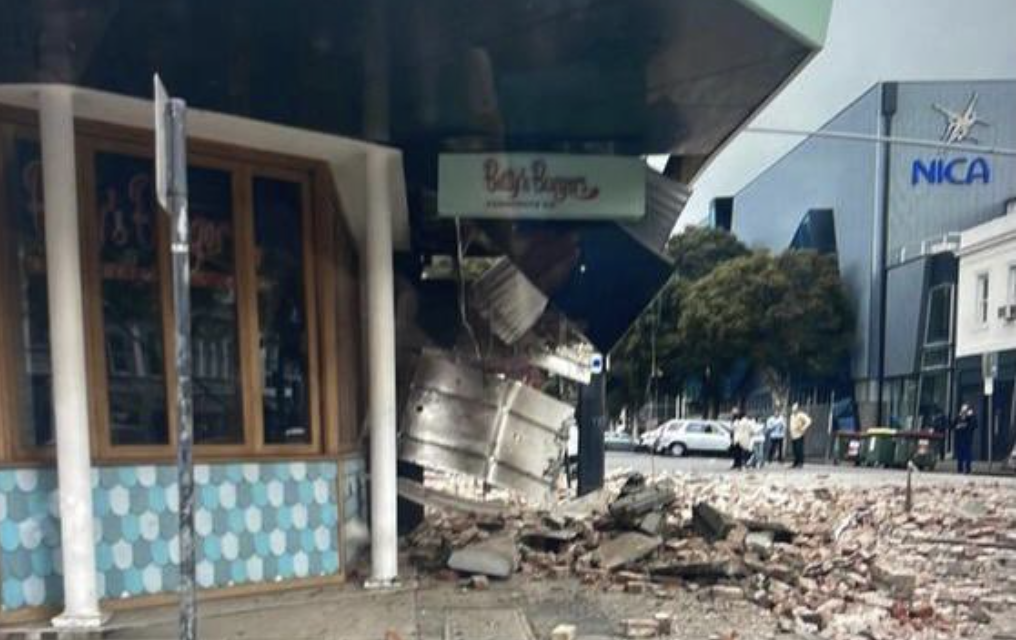A building on Chapel Street.
Three earthquakes have struck in north-east Victoria, with tremors felt across the state, New South Wales, Canberra and as far as Adelaide and Launceston.
The shock happened at about 9.15am, images of destruction in Melbourne began appearing on social media. Several people shared videos and pictures from the inner suburb of Windsor, where a hamburger restaurant was smashed by the quake.
Dr Januka Attanayake, the research lead with the University of Melbourne’s Earthquake Seismology Earth Sciences unit, said preliminary estimates had the earthquake as a magnitude 5.8 to 6.0.
He told the Guardian, “If these preliminary estimates are correct, it is probably the largest earthquake we have felt around Melbourne in the last 175 to 200 years,” Attanayake said. “If it’s a magnitude 6.0, it’s the first in hundreds of years. This is the first earthquake of this magnitude I have seen here during my lifetime, and it has probably not been seen during the lifetime of several generations.”
“We record about 400 earthquakes less than magnitude 2.5 every year,” he said. “So earthquakes are not an exception.”
Usually, Attanayake and his team would put out more seismometers in the aftermath to try and detect aftershocks, which can last for months, but due to Covid-19 travel and work restrictions this was not possible, he said. Two significant aftershocks of 2.5 and 3.0 have already been detected by existing seismometers.
“It’s important work because if we can detect aftershocks we can detect the fault area that ruptured,” he said. “We need to know this information for proper future hazard analysis. It helps us detect expected ground motions of earthquakes going forward. This is essential information for engineers building city structures in future, as we can for example say how much ground motion can be expected at a given location over the next 50 years.”

